- Celebrity Perspective
- Home > > Celebrity Perspective >
- Sun Meilan(Professor
- Xiaofeng(Former Pre
- Li Baolin(Committee
- Sun Ke(Famous Art T
- Shi Qi(FamousPpaint
- Pi Daojian(Famous A
- Liu Xilin(Famous Ar
- Li Zhengtian(Philos
- Jiang Mingxian(Form
- Wu Jingshan(Librari
- Ye Quan(Vice Presid
- Li Xiaoke(Librarian
- Wang Zhong(Former D
- Huang Guangnan(Form
- Wang Yong(Famous Ar
- Ren Daobin(Former D
- Tang Li(Famous Pain
- Liu Wenjie(Famous C
- Chen Chuanxi(Famous
- Li Geng(Dean of Li
- Lu Rongzhi(Art Crit
- Qin Zhigang(Former
- Li Zhanhua(Libraria
- Fan Yang(Famous Pai
- Luo Yiping(Deputy D
- Lin Zhanghu(Former
- Li Zhenming(Former
- Wang Luxiang(Cultur
- Xiong Yijing(Curato
- Huang Heqing(Profes
- Tao Wenjie(Vice Cha
- Wang Zan(Former Vic
- Chen Xiaojun(Genera
- Ji Lianbin (Former
- Xu Li(Vice Chairman
- He Jialin(Famous Pa
- Wang Fumin(Honorary
- Sun Li(Vice Chairman
- Shang Hui(Director of
- Lu Yushun(President
- Yu Wenjian(Vice Pre
- Fang Tu(Executive D
- Li Xiaofeng(Profess
- Cai Shunong(Chief R
- Feng Shaoxie(Vice C
- Shan Zeng(Deputy De
- Si Wenge (Director
- Ying Jinfei(Directo
- Yang Dawei(Professo
- Zhang Gan(Professor
- Wang Shaoqiang(Pres
- Li Honglin(Director
- Lin Lan(Chairman of
- Wang Ping(Deputy Se
- Wu Hongliang(Presid
- Chen Ming(Deputy Di
- Yu Yang(Professor o
- Wei Xiangqi(Researc
- Jiang Jun (Curator、
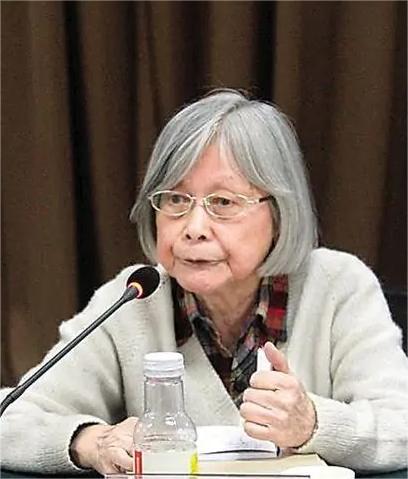
— Sun Meilan(Professor of Central Academy of Fine Arts、 Academic Committee Member of Li Keran Art Fou
I am deeply shocked and inspired by Lai Zhigang’s aesthetic character of adhering to simplicity but being able to create gorgeous, infinitely varied and vivid black and white realms; the vast, mysterious, grand and magnificent atmosphere of the new era in his writing brushes; his exploration of the Chinese spirit of deepening reform and opening up in the 21st century; his development based on inheritance; and his creative vitality of learning from the past and updating. Lai has the spiritual aesthetic expressive power to conquer us. With charming and pure ink language, deep and romantic artistic conception, he has entered into the realm of being inspired by nature, combining tough bones, warm flesh and blood, flexible dynamics, detached attitude, free spirit and magnificent momentum in one painting. He has touched the high realm, great realm and true realm of the true essence of Chinese painting art. With his highly sober self-confidence in Chinese culture, his aggressive sense of innovation, and his vigorous vitality generated by the inheritance and development of accumulated-ink landscape painting, he has knocked on the door of the new pattern and the big pattern of the development of Chinese painting.
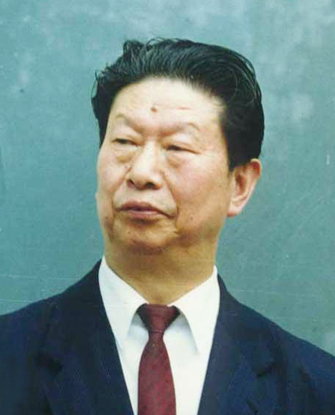
— Xiaofeng(Former President of China Academy of Art、 Consultant of China Artists Association、 Con
Lai’s work is based on the logic of Chinese painting’s rules of ink layout. Within this framework, he tries to pursue the original flavor of the ink image, which is the core of his artistic concept, with his unique accumulated-ink technique. Accumulated-ink is of extraordinary importance to him, as this is the way he has found to perfectly connect his aesthetic ideas with the real artistic needs. However, the display of ink images is not only based on techniques, but also inseparable from artistic thinking and logical planning. Lai changes the ink shades to highlight the texture, volume or sense of space of the object, enriching the picture from both visual and artistic perspectives. Thin white clouds like feathers or thick and dignified black mist, majestic mountains or deep and vast emptiness, his works fully demonstrate his skillful use of accumulated-ink techniques. He must have a deeper understanding of traditional Chinese philosophy, because he embodies the vigor and beauty extracted from the laws of nature in various intentions and gestures, which is visually impactful and profound. This seemingly random but deeply rooted painting technique contains the rich elements of traditional essence, cultural essence, Chinese spirit and national soul that Chinese painters believe in and are willing to express. In pursuing the innovation and development of painting, Lai uses the concrete color, shape and meaning of ink to show the scenery, inspiration and epiphany originating from nature. Therefore, his creative process and his works are always integrated with his own state of mind, showing his creative intentions from the outside and inside, and striving for the mutual understanding and harmony of existence and consciousness. In his works there is the spirit of Chinese painting, the advantages of ink painting, and the harmonious aesthetics of the unity of appearance and interior, all of which belong to his Lai-style landscape. Such a transformation and breakthrough from the routine and stylized painting tradition is undoubtedly in line with the essence and law of the eternal innovation and development of art, and such a new painting style is ultimately derived from the development of the times and the progress of civilization.
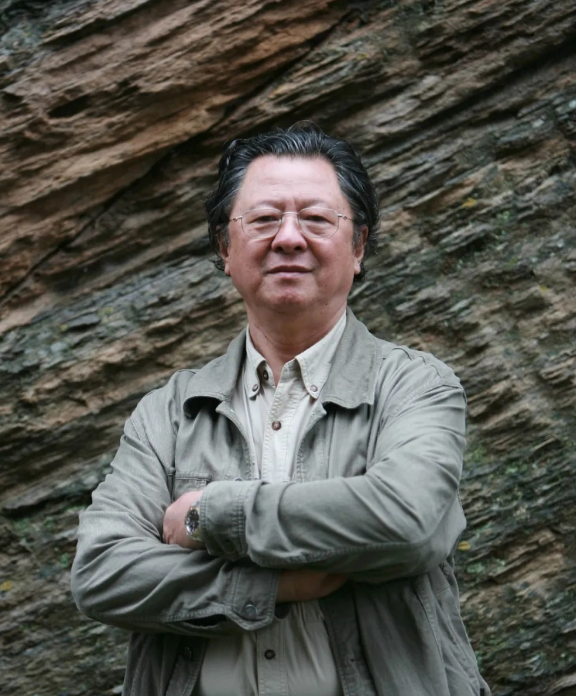
— Li Baolin(Committee Member of China National Academy of Painting、 Vice President of Chinese Paint
To be honest. Lai Zhigang’s works are difficult to deal with. Unlike those paintings that can cover blemishes with color, pure ink works have strict requirements for painters.Lai is able to describe every detail clearly and deeply, and use and control the brush and ink flexibly and gracefully, which is amazing! In terms of artistic conception, he has both shocking and delicate moments, which is related to his consistent painting ideas. Therefore, his paintings are suitable for both distant and close viewing, and contain his true feelings. He added his own unique understanding and application to the traditional accumulated-ink method. For example, his clouds are layered and elegant, and this kind of vivid and deep expressiveness is very rare in accumulated-ink paintings. He is the best at handling pen, ink and mist.
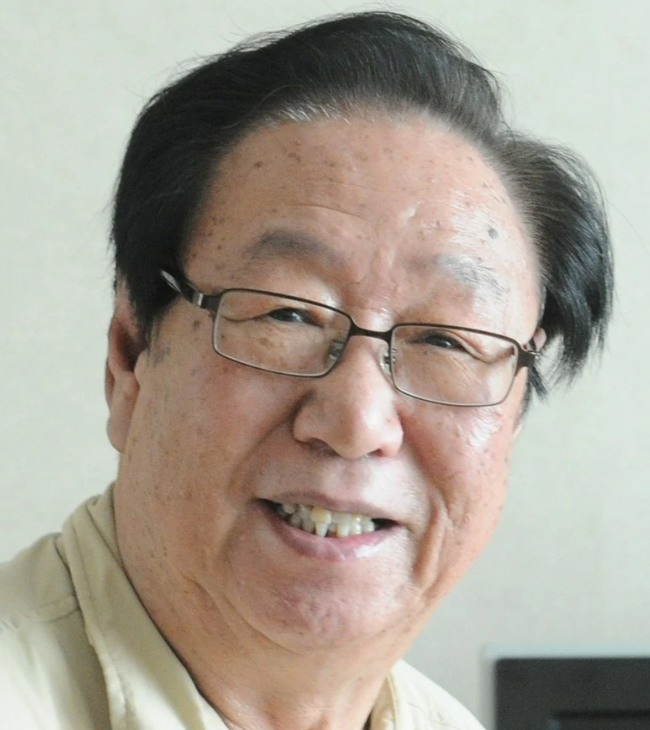
— Sun Ke(Famous Art Theorist、 Former Vice President of Chinese Painting Society)
Lai Zhigang’s landscape paintings are majestic and individual, because he is a painter who is hardworking, diligent, intelligent, open-minded and imposing. I think he inherited the artistic spirit of Mr. Li Keran and made new explorations by himself, which can be seen from the profound artistic conception and atmosphere of his works that are different from others. He has his own pursuits, for example, he likes a wetter brush, which is different from others, and also different from traditional landscape painting. He endows clouds and fog with vivid forms and rich changes, showing his unique ideas, in-depth exploration and bold creation in this regard. His style can be regarded not only as an innovation, but also as a development of Mr. Li Keran’s accumulated-ink landscape, which is very valuable.
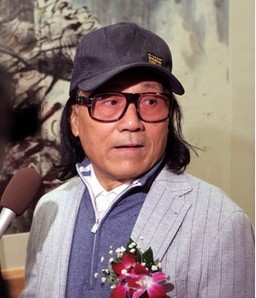
— Shi Qi(FamousPpainter、 Researcher at China National Academy of Painting、 Former Deputy Director
Lai Zhigang’s landscape paintings are all in ink, but they are very modern and comprehensive, while retaining the soul of Chinese painting. From the depiction and layout of images such as the top of the mountain, the foot of the mountain, and clouds, we can see his solid accumulation of painters and exquisite control of brush and ink. His paintings are endowed with a strong momentum and an extremely prominent personal style. When the charm of ink in traditional Chinese painting is ignored today, he still pays great attention to it, and this is also a kind of advanced consciousness in another sense. He is able to inherit the traditional poetic flavor, and while absorbing the experience of others, he insists on his own characteristics until he fixes his own style of painting and even forms a painting school. The real great painters rely on their own wisdom, hard work, and even innate talent, so they cannot be replaced by others. Although it cannot be asserted that such people must have a bright future, they can shine in any field.

— Pi Daojian(Famous Arctic、 Deputy Director of the Curatorial Committee of the China Artists Associ
Lai Zhigang has well inherited the ideas of "reflecting Tao through form" and "harmony between art and philosophy" in traditional Chinese painting theory, and he has also innovated on them. I think the greater the tradition, the more difficult it is to get out of it, which requires great courage, wisdom and strength. Lai did it, so his art represents a peak of the traditional school at present, and embodies the spirit of oriental culture, that is, the philosophy of Confucianism, Buddhism and Taoism. His huge paintings are unprecedented, grand in spirit and powerful in style. The realm he created is broad and vigorous, expressing the aesthetic emotion and ideal of modern people. He has also greatly advanced the brushwork and ink techniques of traditional Chinese landscape painting, especially using accumulated-ink method to paint clouds, water, and the grand overall atmosphere. This is also unprecedented, pushing the technique of accumulated-ink in Chinese ink painting to a new extreme. I think Lai’s modern landscape art is another advancement of Chinese landscape painting after Mr. Li Keran.He provided us with an example of the transition from traditional culture to modern times, and inspired us how to base ourselves on the present and how to move toward the future. This is very remarkable.
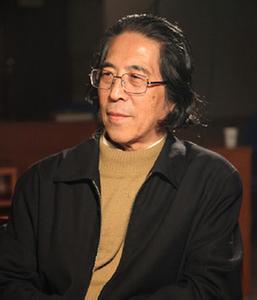
— Liu Xilin(Famous Art Critic、 Research Librarian of National Art Museum of China)
Lai Zhigang continues the cultural context of modern landscape painting, seeks changes in the inheritance, and gains new life in the changes. Lai’s changes are supported by the momentum of the rolling mountains shaped by accumulated-nk, and perhaps more dependent on the unrestrained and free spirit of clouds and mist. The ancients combined the natural scene with the creation of poetry, which is the beauty of Chinese poetry and painting, and Lai therefore named himself Yunchan. He likes to paint continuous clouds, rolling clouds, bursting sun beams and mountains shrouded in light. The atmosphere he painted with ink imbues the picture with a poetic mood, revealing the significance of black and white as the colors of all things. He thoroughly grasped the beauty of mountains and rivers, which is consistent with Lao Tzu’s natural philosophy. Lai is good at summarizing the laws of art. His works embody a kind of aura, a realm, a kind of accumulation, and a kind of great beauty.
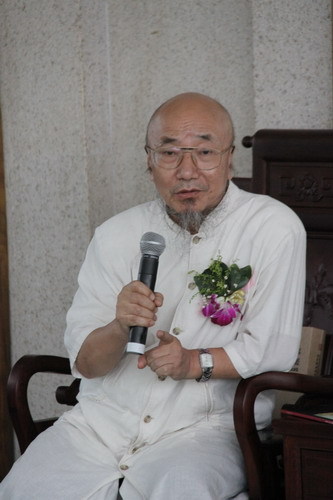
— Li Zhengtian(Philosopher、 Professor of Guangzhou Academy of Fine Arts)
Lai Zhigang is special. I have never seen a landscape painting with such a pattern and style. I saw and heard music in this purest and most concise black and white painting. Yes, he can vividly express the rhythm and melody of music through black and white and static composition. This is where the difficulty lies. I am very curious about how he uses the simplest colors and the simplest elements to express the very complex and beautiful realms and relationships in the world. Throughout the ages, have you seen this kind of painting in the world of Chinese painting? Excuse my ignorance, and I haven’t seen anything like this. I haven’t seen it in Qi Baishi’s paintings, I haven’t seen it in Huang Binhong’s paintings, and I still haven’t seen it in Li Keran’s paintings. I was shocked at once, and this is Lai Zhigang.

— Jiang Mingxian(Former Director of the Fine Arts Department and Institute of Taiwan Normal Universit
Lai Zhigang’s paintings are astonishingly large, containing profound artistic conception and majestic momentum. The ancients emphasized that painters should focus on accumulation and tempering, but momentum is innate, so the majestic momentum shown in the works cannot be learned by ordinary people. In addition to the artist’s own talent, this perfection also requires the cooperation of brushwork and ink. Lai Zhigang’s works meet the requirements of the ancients for grandeur, which can be said to be a testament and advantage of his genius. His whole work is very full, but there are still blank spaces, such as waterfalls and white clouds. This kind of contrastive tension between real and virtual, strong and weak presented on the picture is also a characteristic of his pictures. The most important thing for a work is to have meaning outside the picture, which can be extended from the small to the big realm and big imagination, which is also very rare and valuable.
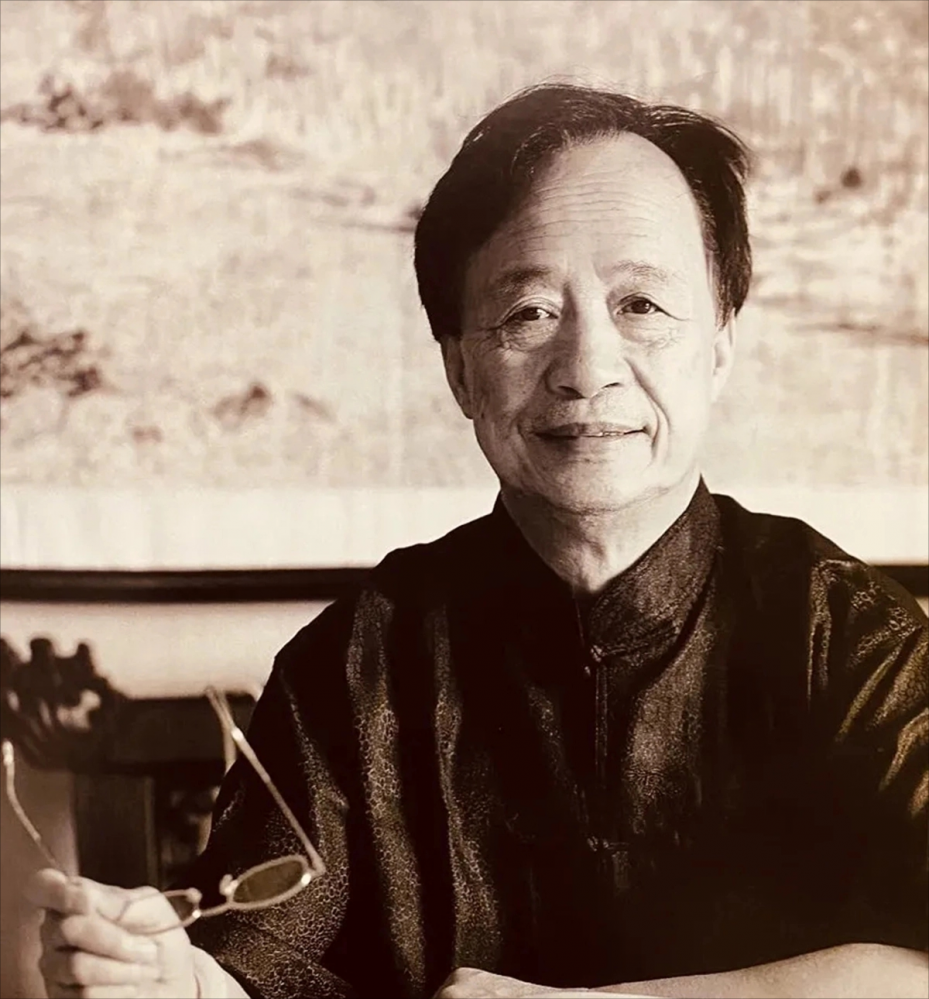
— Wu Jingshan(Librarian of the Central Research Institute of Culture and History、 Director of the H
What Lai Zhigang expresses in his works even reaches the state of echoing with nature that Du Fu said. In the summer of 2022, I went to his exhibition at the Guangdong Art Museum with my friends, and was shocked by his profound accumulation and exquisite techniques. The strength, majesty and spirit of his brushwork and ink use lifted my spirits, and his layer-by-layer special painting skills are so impressive. Lai learned the strengths of ancient and modern painting masters, from which he realized his own painting philosophy and created his own painting school. His works are numerous, but we never get tired of them, and are full of praise. At this moment, I just want to say "the soul of the mountain, the change of the water, the spirit of the cloud, this is really beautiful! I admire Lai Zhigang".

— Ye Quan(Vice President of Macau Educational Culture and Arts Association)
Lai Zhigang’s paintings are shocking! The black part of them is transparent and moist; the white part is bright, with light shining inside. This effect is difficult to achieve, and it is not something ordinary people can handle. With his obvious personal style, he broke through the techniques of traditional Chinese painting, especially in the painting of clouds. This kind of texture, atmosphere, style, and personal mind have reached an extreme. He is worthy of admiration!
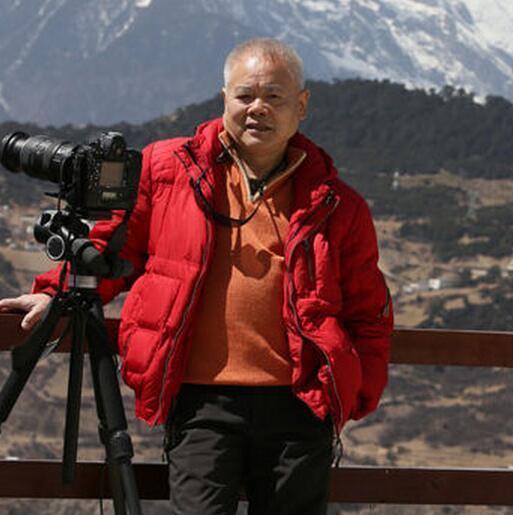
— Li Xiaoke(Librarian of the Central Research Institute of Culture and History、Chairman of Li Keran
Lai Zhigang’s ability to enter painting is a very important aspect of his success, which is inseparable from his tenacity and continuous efforts. He grasped the technique of "accumulated-ink" in Chinese painting, and uttered his own unique voice through ink, and this feeling comes from his constant perception in life. But more importantly, it is to experience, to experience the ever-changing kind of vigor, the kind of misty rain, and the relationship between mountains and clouds. He does not simply paint clouds and mountains, but transforms them into a kind of charm, sense of space and thickness of ink, which is benefited from his many years of practice. He knows how to grasp the relationship between ink painting and the structure of mountains, the relationship between space and air and the thickness of mountains and the flow of clouds, thus developing his own special style.
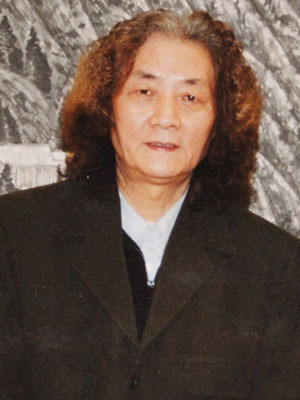
— Wang Zhong(Former Deputy Director of Theory Committee of China Artists Association、 Former Editor
Appreciating Lai Zhigang’s paintings is like watching a movie on a wide screen, or listening to a symphony. Their structure is grand and imposing, so that I have an intuitive and immersive experience of majesty, rather than just reading from the text, which is not easy. His landscapes are large in scale but not empty, full but not clogged, and his composition is like the key parts of a great director. The angle he seeks from the clouds and mist of the mountain gorge can show the complex inner momentum and the structural and tense style of painting. He expresses the ultimate aesthetics of mountains and rivers with a movie perspective of "black clouds overwhelming the city and are about to destroy it". So he can conquer us with paintings, catch our sight and shake our hearts. He really did. Before Lai Zhigang’s large landscape painting full of righteousness, what I felt was solemnity and nobility. What inspires me is undoubtedly the Chinese spirit of art!

— Huang Guangnan(Former Director of Taiwan Museum of History、Former President of National Taiwan Un
Lai Zhigang’s painting art is based on the solid foundation of Chinese culture, and it showcases the oriental civilization of the times with brush and ink skills. The backlighting method he uses on mountain walls or mountains can provide multi-layered changes in mountain backs, hills and valleys, which is suitable for displaying natural scenery and the mist created by the water vapor of mountain streams. In his paintings, there are always clouds and mist covering the mountains. Following the change of seasons, his white clouds, cyclones or hazy winds have their own appearances. This new landscaping technique is quite modern, and it is also a new creation and new style of ink painting in the new century This is definitely a new highlight of ink aesthetics in the new century, and also the new soul of Chinese landscape painting. He seeks Chinese philosophy in oriental aesthetics, seeks the connotation of painting creation in natural scenes, and displays the vigorous expressive force of painting with grandeur. His spirit is not only admired by ordinary people, but also worthy of our praise and learning as art practitioners.

— Wang Yong(Famous Art Theorist、 Researcher of China National Academy of Arts)
Lai Zhigang’s new landscape painting with the method of accumulated-ink has created a new style. Starting from the accumulated-ink technique, Lai has modernized the traditional Chinese philosophy of Laozi and Zhuangzi, and promoted them into the category of modern aesthetics. Such a transformation has profound implications. He used the method of accumulated-ink to depict the majestic and gorgeous effect of the mountains, while the clouds and water are ethereal, light, and have a translucent texture, which is lacking in traditional Chinese paintings. The contrast between the light and imaginary clouds and the heavy and solid mountains makes his paintings more magnificent. With his rich simplicity, he has unique attainments in dealing with black, white, and gray tonal variations. I can’t help but think of China’s resurgence, especially after a hundred years of suffering. This powerful spiritual force is touching and shocking.

— Ren Daobin(Former Dean of the School of International Education, China Academy of Art、 Professor
Lai Zhigang’s works are purely in black, white and gray. He cherishes ink like gold, and every stroke is just right, superimposed vertically and horizontally, rich in layers, and endless in color rhyme. Without more colors, he can express the clouds, water, sky, light, mountains and valleys, high mountains and low valleys in the mountains and rivers vividly and full of wildness. It presents the tenacious life and rich expressive tension of ink and wash. The clouds and mountains in his picture are majestic and beautiful, ready to emerge, with extraordinary momentum, like a general, a sage, a real gentleman, simple and straightforward, calm and easy, standing upright, and carrying all things with virtue! This is related to his good application of Lao Tzu’s simple dialectics. The composition, shape, and brushwork on the screen, its vertical and horizontal height, density, rigidity, size, virtual and real shades, light and dark shades, square, round, line and surface, and many other contradictions are all unified in the changes, with ups and downs, like poetry and songs, rich and colorful, like dreams and illusions, making people stop and appreciate without feeling of aesthetic fatigue. He also praised the beauty and majesty of the mountains and rivers of the motherland, the eternal and unyielding temperament of the nation with his rich works, and praised the happiness of living in a peaceful new era, playing a new movement of accumulated-ink landscapes. His paintings have ideals, temperament and spirit. Although they are ink and wash, they are full of flying spirit, which makes me feel refreshed and deeply moved.
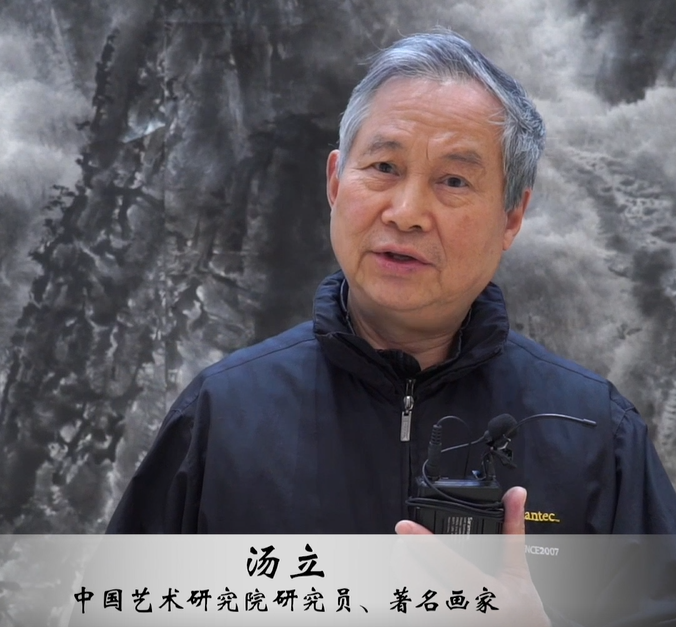
— Tang Li(Famous Painter、 Researcher of China National Academy of Arts)
Lai Zhigang showed us both a new look and a new expansion in the landscape paintings along the traditional road of Li Keran. Such a large space and full of momentum, which shocked me. He not only expresses the light of Mr. Li Keran, but also a kind of aura, which was used to depict the dense atmosphere of clouds and mountains. I think he is a very prominent and outstanding landscape painter in the contemporary era, especially when he expands on the basis of carrying forward the tradition.Landscape painting is relatively difficult to develop, but Lai obviously has his unique artistic language, and has made very meaningful exploration and innovation in this area.
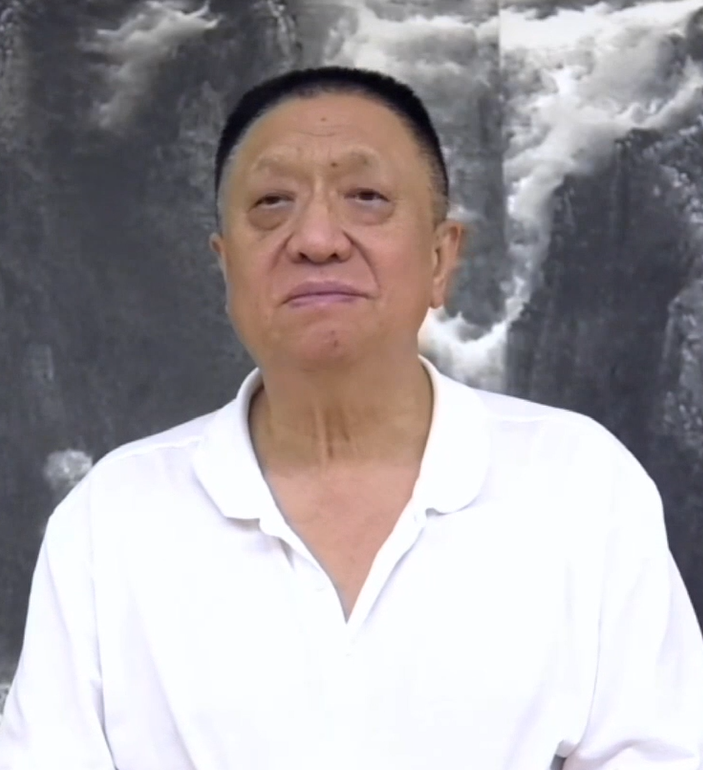
— Liu Wenjie(Famous Collector and Connoisseur of Calligraphy and Painting)
Lai Zhigang chose a painting method that can express infinite depth, infinity, energy and volume. Majesty is the most important feature of his large paintings, and it is a feature of content, with the courage to cut off clouds and rain. His painting method of "accumulated-water" is unprecedented, using water to produce many wonderful effects. He uses "accumulated water" to affect the ink effect of Chinese paintings, because the ink cannot be evenly dispersed in the fibers of the paper, and cannot be fully dense. "Accumulated-water” rejuvenates the ink that has not been fully sublimated on paper and makes it sublimate. This is a breakthrough in philosophy and aesthetics. Lai has entered a new stage of creation, which has given some new inspiration to future generations. If future generations follow this path, this kind of philosophical thinking, and this kind of aesthetic thinking, I think it will be a guideline for the development of Chinese painting.
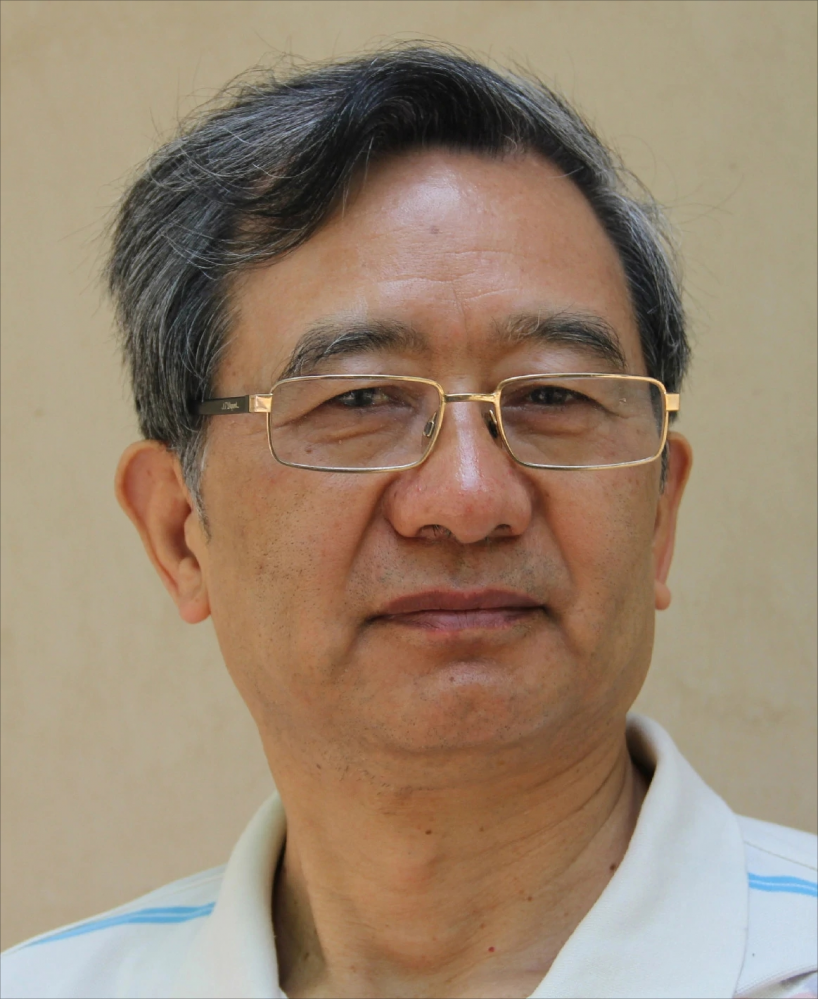
— Chen Chuanxi(Famous Art Critic、 Professor and Doctoral Supervisor of Renmin University of China)
Lai Zhigang’s landscape paintings are characterized by their majesty and majesty, and such characteristic is more prominent than others’. The momentum of the large-scale painting can only be sensed by seeing the original work with one’s own eyes, because the printed matter cannot reflect it. His method of accumulated-ink not only synthesizes the experience of the predecessors, but also adds his own creation, which is rich and thick. Yes, thickness, which has reached a considerable height in his paintings. The whole spirit of the times calls for majesty, and his majesty and grandeur are just in line with the atmosphere of New China. He painted clouds, which are truly unique in ancient and modern times. The clouds are bright on the top, gradually getting heavier as they descend, and they have the tendency of light clouds rolling and changing. This is different from other schools of painting in ancient and modern times; it is his own original creation, and it has a modern feel. The basis of art is technology, and this is his original cloud painting technique, which is so vivid. Anyone who creates a school must be able to create originality, and only originality can blaze a trail that truly belongs to him.

— Li Geng(Dean of Li Keran Academy of Painting 、 Professor of Kyoto University of Arts, Japan)
Lai Zhigang is full of passion for ink painting, and I feel that his understanding of ink painting is much deeper than what I saw in his works before. There have been many changes in his brushwork and ink use, especially in the change of clouds, and he has matured expression again, which is indeed remarkable. This proves that he has made a new breakthrough in large-scale creation of content and ink painting. His small-scale sketches are in-depth works, and I can really feel the achievements he has made through hard work. I congratulate him on his artistic achievements, and at the same time expect him to make more and greater contributions to Chinese art.
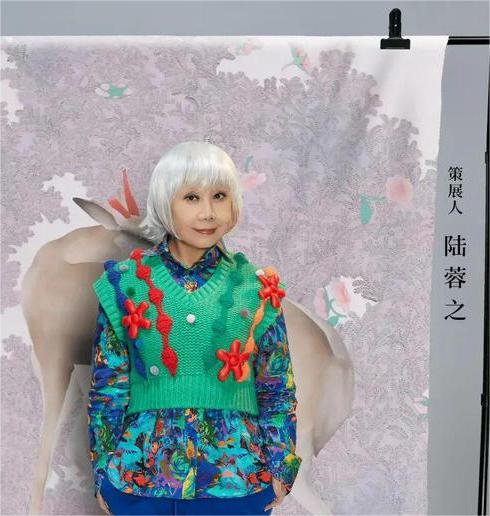
— Lu Rongzhi(Art Critic 、Curator)
There is a strong contemporaryity of the 21st century in Lai Zhigang’s works. He has a unique way of expressing waterfalls, water flow, waters and sea of clouds and clouds. I have not seen any examples that are particularly similar to him in history, so I think these two painting methods are his typical style, which means that you can recognize his works at a glance. This signature style is a very important milestone in the creation of the artist, and I think Lai’s milestone lies in his description of water and clouds. In his landscapes, we rediscover the philosophical realm of the unity of man and nature. I think this is the most precious part of his paintings.
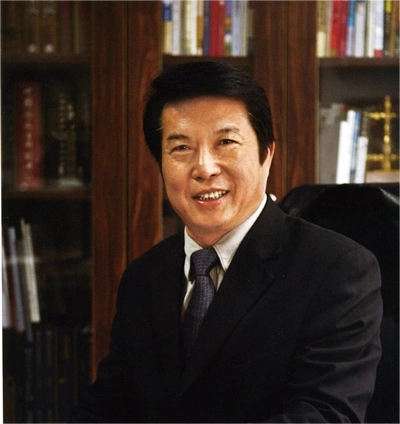
— Qin Zhigang(Former Vice Chairman and Deputy Secretary of the Party Leadership Group of China Federa
After seeing Lai Zhigang’s paintings, I was very happy, inspired and shocked. Black and white are actually the basis of Chinese thinking, because Chinese thinking starts from the Book of Changes, from the eternal change of black and white. "Black and white" and "the five shades of ink" are the foundation of Chinese painting, the root of Chinese painting, and an important aspect that distinguishes Chinese painting from oil painting and other types of painting. His paintings are grand and majestic, which is reflected in black and white. Black and white reflect and transform each other, which is obviously an innovation compared to the traditional way of expressing only with the shade of ink. The one that is unique in this aspect, and well known to everyone, is Gong Xian. In modern times, it was Li Keran who pushed black and white to a new stage and introduced light and shade. It seems to me now that Lai took it to the extreme. Chinese painting requires hard work, just like Chinese medicine and Chinese Kung Fu, you need to hone it. Lai is able to calm down, explore, discover, summarize, generalize, and improve, and it is not easy to get to where he is today.

— Li Zhanhua(Librarian of the Culture and History Museum of the Guangdong Provincial People’s Gover
Lai Zhigang’s landscape works have great passion, great realm, and great appearance. They are both traditional and based on contemporary times, and they are comprehensively sorted out and summarized systematically on the basis of predecessors. I think he has done it. His paintings truly embody the combination of macro and micro, and have reached the extreme of traditional landscape painting in the contemporary era, which has far exceeded the sense of oppression that the ancients understood at that time. His painters, the use of brush and ink, has reached perfection. He has not forgotten what his teacher taught, but he uses his own understanding to create, which in turn confirms the path his teacher took. So I think he has reached a higher node, which is a phenomenon that can really bring Chinese landscapes to a new landscape.
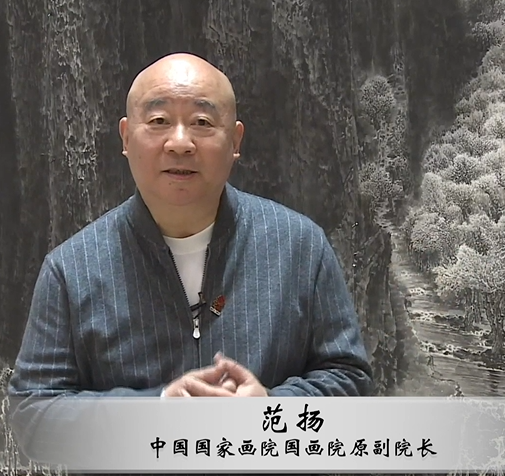
— Fan Yang(Famous Painter、Postdoctoral Supervisor of China National Academy of Painting)
I was moved by Lai Zhigang’s work The Way with Art. His mountains and rivers restore the majestic momentum contained in the natural scenery that the ancients said, especially in this work. I saw the majestic atmosphere that Song people admired, with streams, mountains, and trees, which showed the painter’s mind. In the use of ink and wash, he showed Mr. Keran’s melancholy and majestic strength, and also reflected the majestic appearance of the mountains blowing towards his face that is characteristic of Fan Kuan. Lai is very successful, which is reflected in his creations in contemporary ink landscape paintings. It should be said that he is a new force in contemporary landscape painting and a leading painter.

— Luo Yiping(Deputy Director of the Curatorial Committee of the China Artists Association、Vice Pres
Lai Zhigang’s landscape paintings with "real state" as the main body cast a solid and magnificent space. On the visual level, Lai Zhigang’s "real state" landscape creates a realm beyond the constraints of time and space, which is the unity of form and formlessness, order and disorder, manifesting as a kind of thick, steady and powerful beauty. In his works with "virtual state" as the main body, everything is shrouded in mist and mist, presenting a scene that has continued from ancient times to the present, a beauty of silence. Consciously or unintentionally, Lai established the inner connection between ink painting and Chi-nese philosophy with his landscape paintings intertwined with "virtual" and "real". His ink land-scapes are not constrained by specific objects, but integrate the emotions of the subject into the object, and use the invisible water to carry the ink to stack the shapes arbitrarily. This kind of brush-and-ink language and modern aesthetic expression, as well as the aesthetic de-mand for art to rise to the spiritual realm, silently transform the self-pursuit of the truth of life into a boundless and implicit transcendent artistic conception, and elucidates one’s life experience of "virtual state" in the image of "real state".
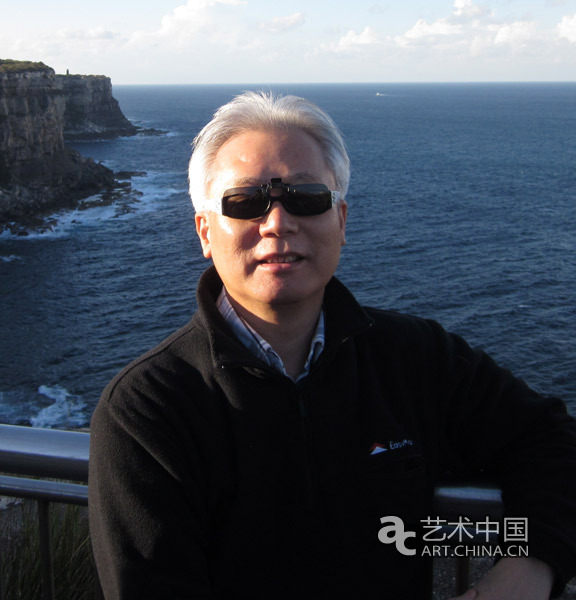
— Lin Zhanghu(Former Dean of the Academy of Fine Arts, Taipei National University of the Arts)
Lai Zhigang has painted landscapes so majestic and touching, which is really eye-opening and worthy of admiration. We see that his works have crossed three mountains: Gong Xian, Huang Binhong, and Li Keran, which are very profound and difficult to cross. He struggled to bring out his personal appearance and spirit, showing us a new atmosphere. His ink-accumulated landscapes give us the greatest inspiration and the greatest new meaning, that is, an innovation of ink painting in the tradition, which is both personal and contemporary. In the end, I wrote a poem ,which read “Lai carried forward Mr. Li Keran’s artistic style and added his own unique innovations. Whoever has artistic attainments has the right to speak. Lai set an example for us with the technique of ac-cumulating ink.”

— Li Zhenming(Former Dean of the College of Art, National Taiwan Normal University)
Lai Zhigang has moved from the traditional to the contemporary, forming a unique and very recognizable personal creative symbol. Symbols are intertwined and connected in series to form a new type of ink landscape, which attract so many art practitioners including me. This is a clever aesthetic synesthesia found from the bottom of my heart in face of the natural layout and management. When you step into Lai’s exhibition, it’s hard not to be shocked and moved by his large-scale works. In the process of painting clouds in layers, it is difficult to manipulate the characteristics of this kind of material that is not fully manipulated, and the skills he demonstrated are really amazing.
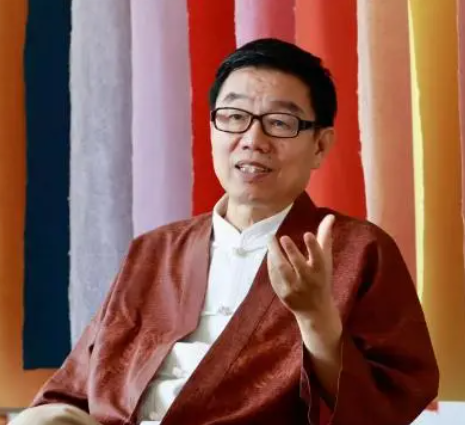
— Wang Luxiang(Cultural Scholar、Researcher of China National Academy of Painting)
From Lai Zhigang’s works, we can see his inheritance of the Li-style landscape, a kind of continuation and variation of genes. If you are quite familiar with Western art history, you can indeed feel the artistic characteristics of Baroque in his landscape paintings. This illusory, light and shadow effect is exactly one of the visual characteristics of Lai Zhigang’s ink art. Ms. Zou Peizhu, as the wife of Mr. Li Keran and an artistic supporter, wrote "Inheritance and Development" for Mr. Lai, with deep sustenance. Before his death, Mr. Li Keran entrusted Mr. Li Baolin to say that there should be a sudden change and a big change, and he also hoped that Chinese painting can develop again. So in this sense, from a new perspective of cognition, the creation that has been concentrated in the past few decades is also an answer to Mr. Keran’s last request.
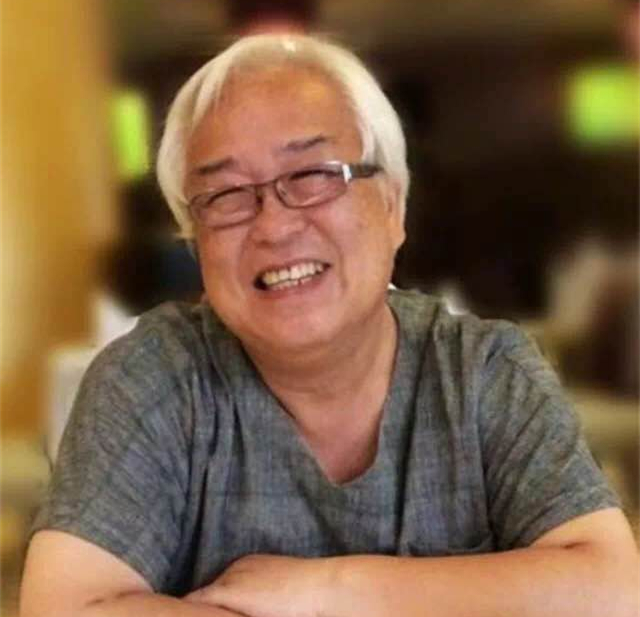
— Xiong Yijing(Curator、Editor-in-chief of Collection、Editor-in-chief of Grand View)
There is a certain spirit in Lai’s works that is in line with Li Keran’s “daring to express himself in a pioneering and innovative way”. He doesn’t put on airs and knows exactly where he’s going. This kind of character is valuable and important to the younger generation. Everyone knows the simplest principle of painting, which is to learn from nature and then inject your own insights. So far today, he has been implementing this appropriately. The clouds he painted are very special in brightness, and they are also very vivid and fluid in trend. In addition, the black and white echoes and contrasts of the whole painting are very strong, and this intermingling of fiction and reality is so charming.
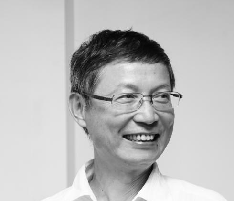
— Huang Heqing(Professor of School of Art and Archaeology, Zhejiang University)
Lai Zhigang’s paintings do have elements of inheritance and development, some for the ancients and some for the present, including those landscape paintings of the Northern Song Dynasty, as well as painters such as Li Tang, Fan Kuan, Li Keran and Lu Yanshao. So he has inherited something, but is not limited to inheritance, because he also has his own development and innovation. For example, his paintings of clouds are indeed quite unique. There is a very obvious sense of movement in his paintings, which is what Chen Chuanxi called dynamic beauty and masculinity. This is pioneering.I think such an expression of a sense of movement and the beauty of movement in Chinese landscape paintings is indeed worthy of recognition. The current exhibition space emphasizes a kind of publicity. Faced with such a huge space, especially overseas, such large-format paintings are really needed. It is not easy for him to draw such a large painting, and it is indeed suitable for a modern exhibition space.
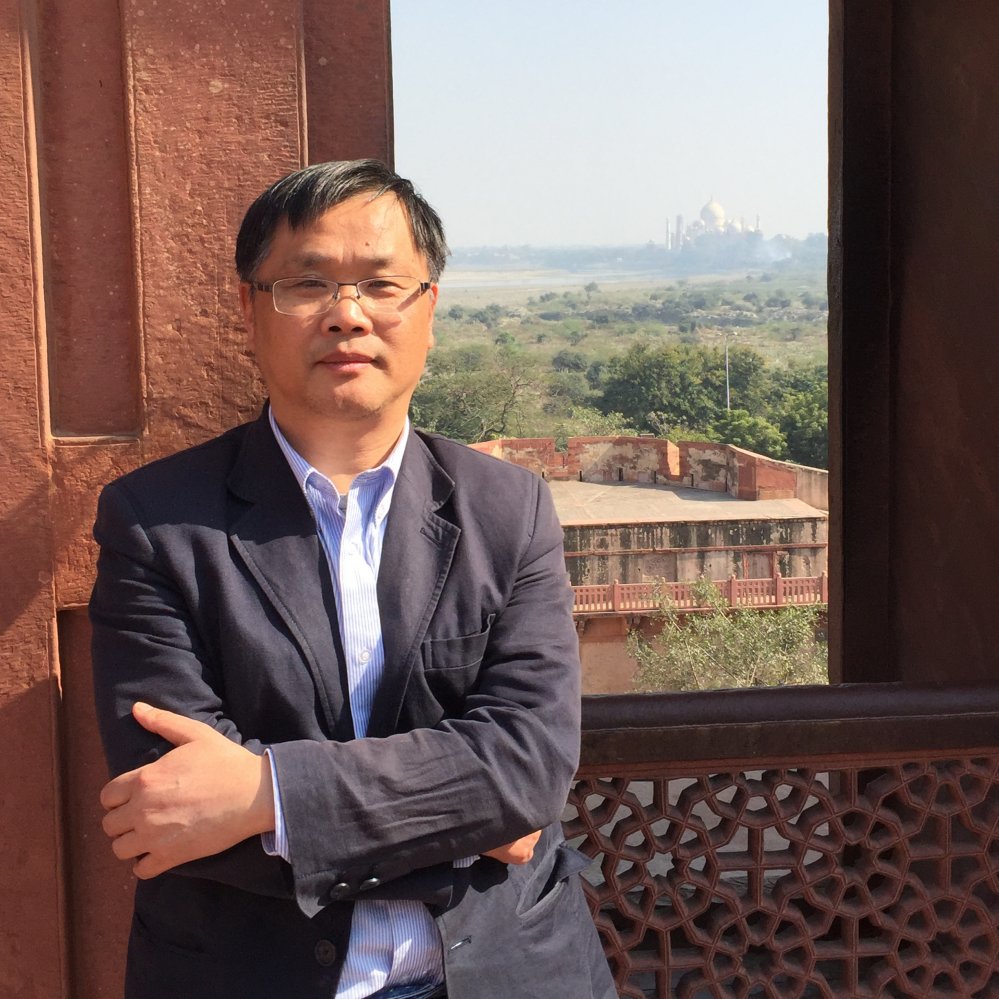
— Tao Wenjie(Vice Chairman and Secretary General of Zhejiang International Art Exchange Association)
Lai Zhigang’s paintings are completely different from the exhibitions seen on WeChat and albums. It has a sense of layering, system and space, which is shocking. It is very difficult for a painter to accurately position himself and form his own style, even impossible in his whole life, especially for Chinese landscape painters. Lai made new breakthroughs with the method of accumulated-ink, forming a strong sense of personal identity, demonstrating his unique style, tension and expressiveness. This is commendable for a painter, and it is not easy for him to do this. He has absorbed all the good things of the famous masters of the past dynasties, and then merged them with what he wants to express, forming his own unique painting style. In the end, he succeeded in being himself.
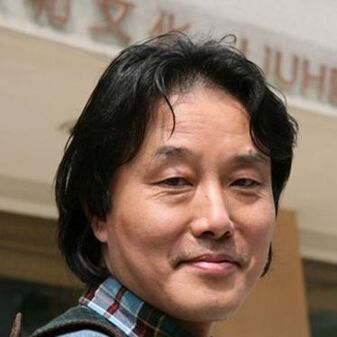
— Wang Zan(Former Vice President of China Academy of Art)
Lai Zhigang’s works have a very unique taste from the shape to the charm, the charm of ink, to the expression of the whole strength, and the spiritual expression of landscape. It can be clearly seen that this artist has a deep understanding of nature and tradition, and can keep the traditional landscape firmly in his heart, and turn it into a new understanding of the new landscape. He not only made a lot of attempts in the language of brush and ink, but more importantly, he integrated the purity of this language with his persistent pursuit of art, which is what the artist pursues. He not only emphasizes hard work, but also emphasizes a kind of creation in language. This kind of creation is reflected in his understanding of nature and his different perceptions of mountains and rivers. It is a ferry back and forth between us and nature. Thus, time and space are formed in our creations, forming very infectious works of art.
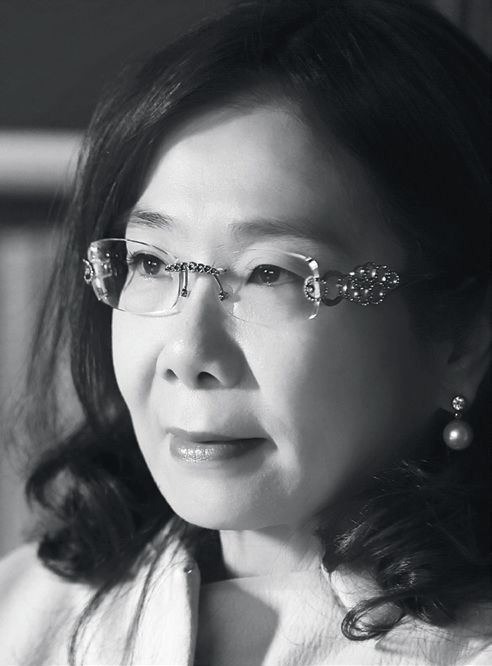
— Chen Xiaojun(General Manager of Xizhi Hall、 Chairman of the Chinese Society of Cultural Relics)
Lai Zhigang is good at challenging big works. I think on the one hand, he is doing what the ancients could not achieve, that is, using large-scale works to display ink-accumulated landscapes, with the most extreme and best artistic expression. I think the change of clouds is his most unique feature, especially the connection between the clouds and all the mountains and waters, which is very natural, as if it is integrated with the real scene. So I always think he is a very prominent representative of the integration of Chinese and Western. In general traditional Chinese paintings, it may not be possible to see the beauty of this reality like 3D images, but it exists in his landscapes. I can feel his rigor and dedication to art. Only when art is sincere can it move people, and Lai’s art has this characteristic.
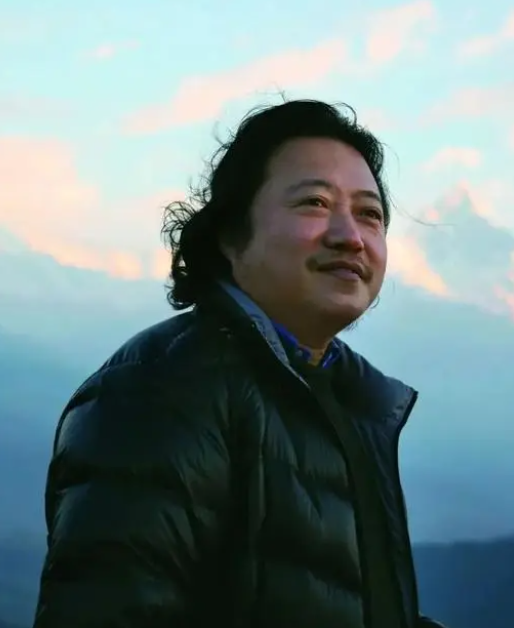
— Ji Lianbin (Former Vice President of China National Academy of Painting)
Lai Zhigang’s black and white landscape paintings are particularly good and shocking. His works have inherited Mr. Li Keran’s realm, language and techniques of landscape painting art. Majestic, vigorous, and magnificent, while inheriting the traditional techniques very well, he also integrates nature into his works through sketching and second creation. He is paying tribute to tradition, to Mr. Li Keran, and to nature with his brush and ink. I think we can feel a spirit of creating biographies for Chinese landscapes from Lai’s landscape paintings.
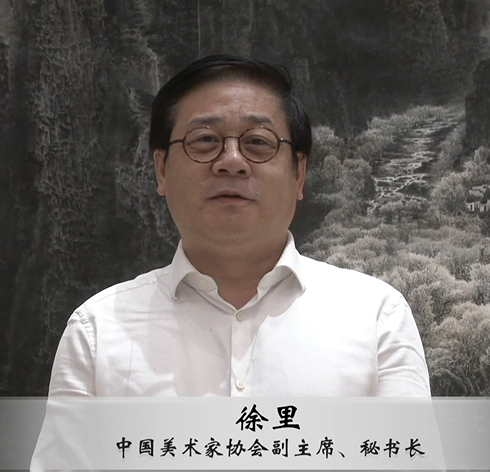
— Xu Li(Vice Chairman and Secretary General of China Artists Association)
Lai Zhigang’s works are magnificent, containing the long history and thickness, momentum, majesty and vigor of Chinese culture. These are fully displayed in his paintings, which have a strong visual impact, reflect the atmosphere and pattern of our new era, and also form his own unique personal style. Although his style looks "black", it is actually transparent, breathable, and thick, and the whole picture is vigorous and moist. He has a grasp of this kind of weather, rhythm, pattern, etc., reflecting a kind of righteousness. The line and momentum of the mountain, the brush and ink and the entanglement of the cloud are coordinated together, reflecting a changing relationship between lightness and heaviness, movement and stillness. There is his own understanding and innovation in it, which is very valuable.
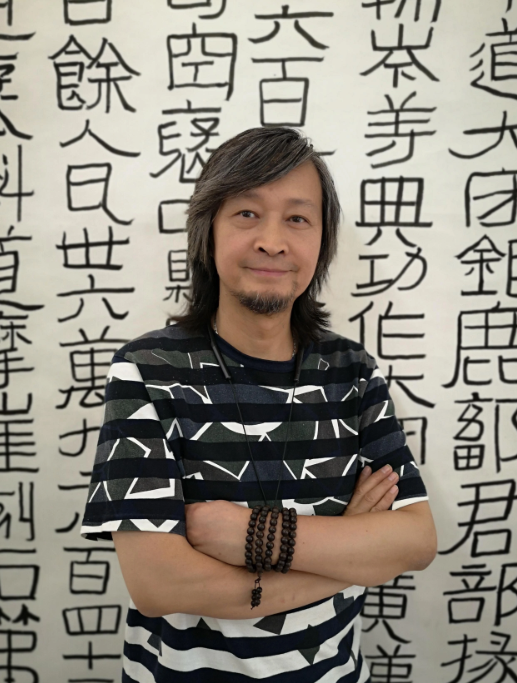
— He Jialin(Famous Painter、Former Director of the Art Museum of China National Academy of Painting)
From Lai Zhigang’s works, we can see a continuation of Li-style landscape in him. Especially in the use of light and accumulated-ink, he has inherited the artistic style of the Li-style landscape. Combining his observation of life with his own understanding, he found his own way of accumulated-ink and formed his own unique artistic style. These are some pursuits that are completely different from Li-style landscape. He painted giant waves and surging clouds, which Mr. Keran had never dabbled in. Therefore, he actually borrowed the characteristics of accumulated-ink from the Li-style landscape, and used light and shadow to express other themes, such as snow mountains, rivers, and waves. His spirit of exploration is very worth learning.
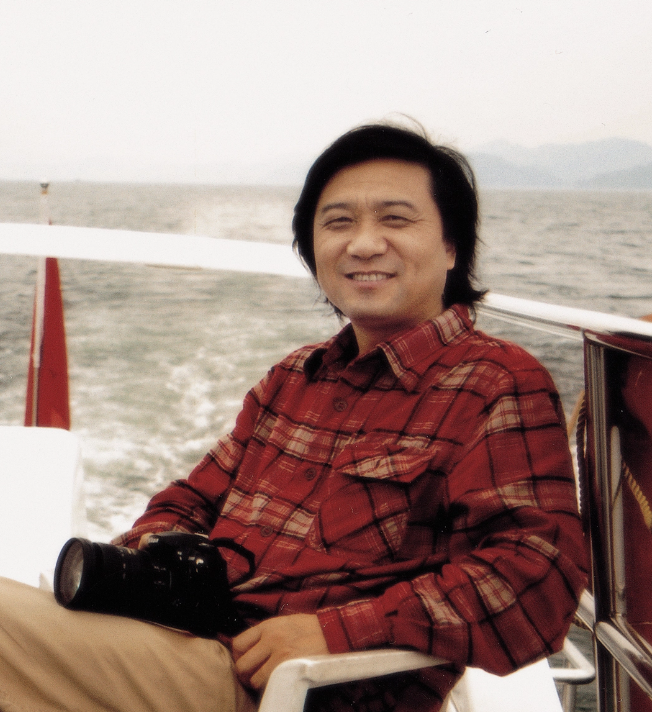
— Wang Fumin(HonoraryDdirector of the Institute of Figure Painting, China National Academy of Paintin
Lai Zhigang first inherited the style and atmosphere of Li-style landscape paintings. From the perspective of technical language and materials, he also continued Mr. Keran’s landscape creation path. On this basis, he expressed more water, clouds, etc., which formed a characteristic of his own landscape paintings. As a representative work of Lai, Spring Tide gives full play to some of his own characteristics and pursuits. In traditional landscape painting, the scenery is outlined with lines or lightly rendered with ink. Lai used accumulated-ink or blanks to describe the great river, and drew the momentum of the tide.

— Sun Li(Vice Chairman of Guangdong Artists Association、 Member of the Art Creation Committee of Chin
One characteristic of Lai Zhigang’s paintings is that he has inherited some characteristics of traditional landscape paintings and added some contemporary Chinese elements. This characteristic is different from traditional landscape painters in that it is very contemporary. The coloring and effects of Lai’s pictures are very innovative, and the whole picture is very full. Especially her handling of mountains and clouds has something unique.Traditional painters don’t have a deep expression of cloud or water vapor, but Lai’s depiction of the two is very unique.
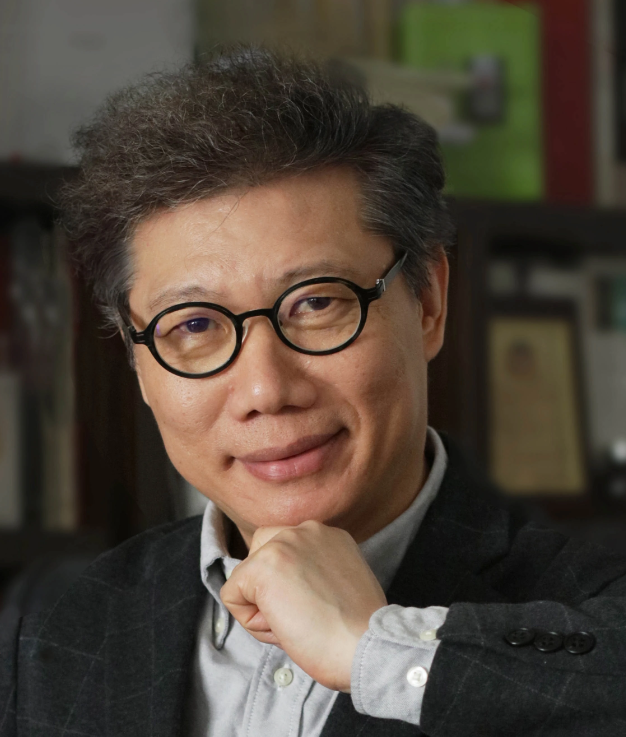
— Shang Hui(Director of Art Theory Committee of China Artists Association、President and editor-in-chi
Lai Zhigang’s paintings do not come entirely from real landscapes, but more reflect the landscape schemas he recreated with his subjective imagination. He created a novelty and mystery in visual experience, rather than a description of natural landscape. He used ink accumulation to deal with clouds and water, changing from amorphous to fixed objects, making them a touchable world and changing our traditional understanding of landscape painting. He does not always use the method of accumulated-ink, but also uses a small amount of "ax chopping" technique to present the texture of mountains and rocks. Otherwise, such a large picture is only piled up with layers of ink, and it must lack the support of bones. This kind of bone is not a side description of natural rocks, but an expression of the texture of the entire landscape. There is no doubt that this is his own re-creation of the texture of mountains and rocks and the language of brush and ink in landscape painting. He paints clouds and water like rocks, and pursues a fantastic change in this volume. This is an artistic feature that he presents from the bottom of his heart.
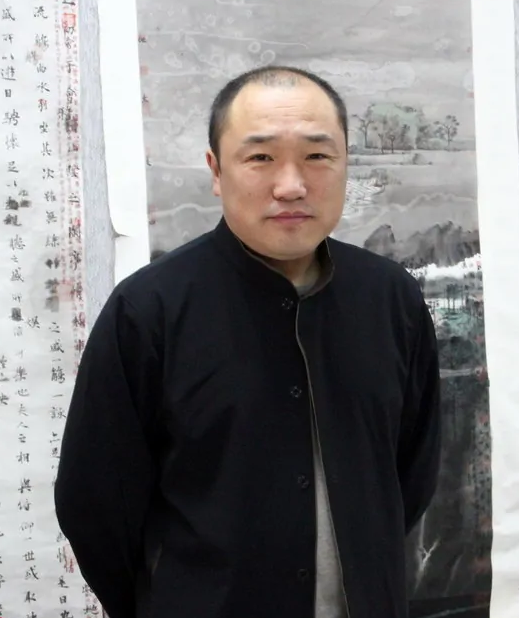
— Lu Yushun(President of China National Academy of Painting)
The works of Lai Zhigang are endowed with great style, great momentum and great realm! He is an artist who respects national cultural traditions, loves real life, and is innovative and creative in artistic practice. He has taken a big step forward no matter in terms of ideology, artistry, including a kind of research and grasp of art itself. From the attention to the subject matter to the deepening, we feel that he has created a certain artistic realm, and on this basis, he has reached a certain ideological height and connotation. In addition, he is also good at understanding art in the most general sense, so he can enter into the lofty pursuit of national cultural traditions and integrate with national style, national spirit and national style. In this way, he can fully display his artistic ideas and raise his awareness. His artistic sophistication is gradually improving, as he presents with the most Chinese artistic language of brush and ink and black and white. The reason why he can express so fully lies in his hard work. His achievements are worthy of our consideration.
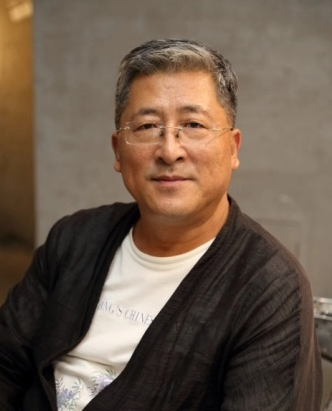
— Yu Wenjian(Vice President of China National Academy of Painting)
Lai Zhigang’s paintings are shocking. His large-scale works are not empty but full of connotations. In Chinese ink painting, if such a large-scale work is not well grasped, it is usually difficult to form a sense of beauty. However, Lai is able to endow this large-scale creation with attractive things through the connotation of brush and ink, which is commendable. This shows his precise grasp and understanding of the traditional language of Chinese painting. His small-scale works are also very interesting, condensing a large space and a large pattern in a small-scale, giving me a visual impact. He prefers thick ink, which is surprisingly ethereal. From his works can be seen the simultaneous existence of inheritance and development.
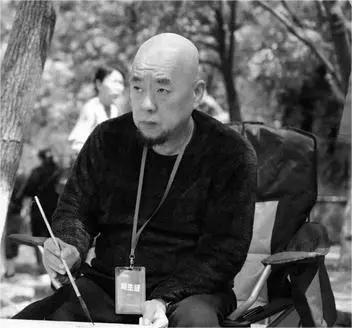
— Fang Tu(Executive Deputy Director of the Art Museum of China National Academy of Painting、Honorar
Most of Lai Zhigang’s works are majestic. He not only walks along the lines of some masters, but also keeps listening to his own prosperity and expressing his feelings. Especially in his fusion of Chinese and Western understandings of pictures, which is a more progressive idea than the ancients. His small paintings are imposing, while the large ones are pure and without any distracting thoughts, reflecting his foundation and state of mind, echoing the pulse of this era, which is a state that the ancients could not feel. We can see that he is standing in the present vision, thinking about his art. His ink has accumulated so many layers, but it is still very transparent and moist, and the harmonious relationship between the skeleton and the ink can be seen in it. I think the most important thing is that he understands "qi", so his composition is ever-changing without causing visual fatigue. His picture composition is very free, and he can achieve this free state because he understands "qi", which is very special.

— Li Xiaofeng(Professor of Academy of Fine Arts, Shanghai University、 Curator)
Lai Zhigang’s works are a kind of shock. He used the most plain colors to complete the most magnificent, surging and majestic picture, which is a remarkable approach. His personality is reflected in the paintings as a strong sense of responsibility, an idealistic social awareness, and a heroic spirit of sacrifice. This lofty aesthetic established his lofty aspirations and masculine cultural interests. Therefore, I focus on his three aspects, one is the cosmology. His landscapes have changed dimensions, which are completely different from traditional landscapes. This kind of re-examination of mountains and rivers in a high dimension is not only for the sake of comparing mountains and rivers with human virtues, but also for the comparison of cosmology. Here, the "Tao" we see is infinity. In the painting, majestic, turbulent, vast and far-reaching converge towards a path that combines mystery and holiness, surpassing kitsch kitsch and excitement. The second is positive energy. His sense of light goes beyond romanticism and impressionism, it is a surreal light sense, but this kind of surrealism is very positive, not magical surrealism. The third is that he not only sticks to tradition, but also actively innovates in ancient and modern styles. This is a process of discovering ancient and new at the same time, and the two are not contradictory. Therefore, he just catered to a contemporary quality.

— Cai Shunong(Chief Reporter of Art News、 Member of Xiling Seal Art Society)
Lai Zhigang’s landscapes are indeed unique in contemporary times, as he regards mist, cloud, river and sea as an important symbolic element in artistic creation. There is color in color, ink in ink, delicate and bold strokes, lush and deep charm, endowing form with life and emotion, which once again proves that there are still many possibilities and rich discoveries in the rhetoric of ink and wash in Chinese painting with strong philosophical meaning. His entire creation is to learn from the ancients and keep pace with the times. Mountains, rivers, bridges, pavilions, vegetation, snowy, moon,, people, and boats are all dense and well-arranged. With bright and dark, cold and warm, and freshness and strangeness embracing each other, both the form and rhythm are advancing step by step. Among Lai’s well-ordered ink works, the strong ones have the momentum of Mount Tai and Yellow River, and the elegant ones have the indifference of autumn sky and clouds, not to mention his huge works using 1 liter of ink. Avoid roughness and oppose mediocrity. His ink marks with clear layers are harmonious with each other, gentle but tough, which can only be achieved by a master of ink. That’s pretty remarkable.
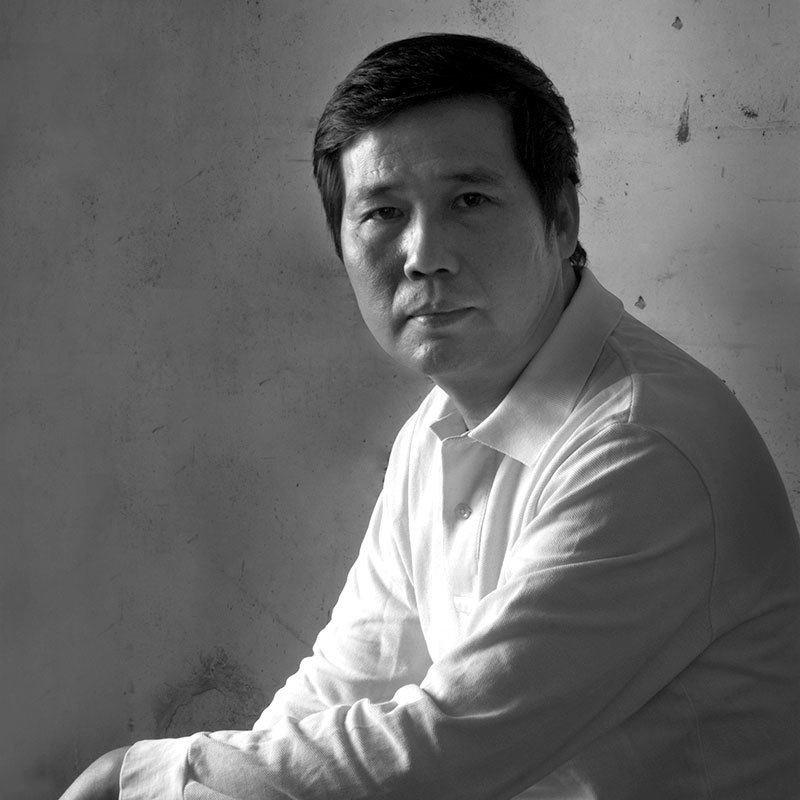
— Feng Shaoxie(Vice Chairman of Guangdong Artists Association、 Vice President of Guangdong Academy
Lai Zhigang’s works are majestic, and rich connotations can be seen in the pure black. If you look closely at his brush strokes and ink traces, you will find that he is very particular about all aspects, and the ink colors are very pure and attractive. This is really admirable. Few people are good at large-scale painting, which requires a lot of control. Lai has his own understanding, his own feelings, and a spirit and atmosphere of his own pursuit, which many people cannot do.
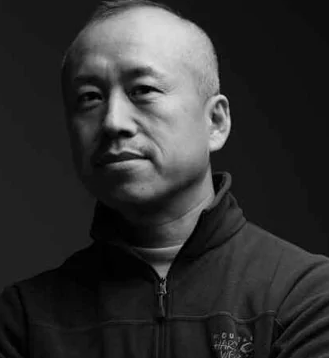
— Shan Zeng(Deputy Dean of the School of Art Education and Management、 China Academy of Art)
Lai Zhigang’s ink wash works are very majestic. This mode of presenting new landscapes with atmospheric brushwork and elements of ink and wash can also be called Lai-style landscapes, which gave us a huge shock. In particular, the turbulent and magnificent breath of the times like Spring Tide, from which we feel a kind of power of the times. I think his works are different from ancient paintings in style, but very magnificent. Especially in traditional landscape paintings, such huge works are very rare. He also has some small scrolls of mountains and rivers, reflecting the unity of water and sky in Jiangnan culture. In particular, some works showing winter scenery are very rare explorations.
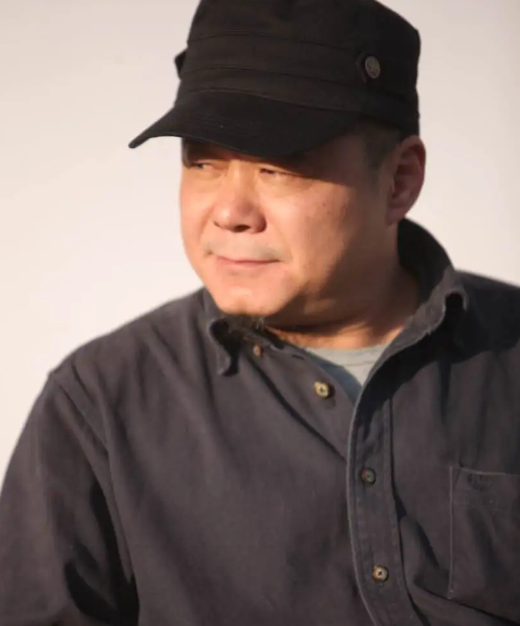
— Si Wenge (Director of the Fine Arts Center of China Academy of Art)
Lai Zhigang’s art has reached the category of contemporary ink painting. His extra-large paintings are relatively abstract and contemporary, and some nutrients can also be found in his small paintings. These are very different from the traditional landscape, and he still wants to show us a world of mountains and rivers in his mind, and we can feel the visual impact. I think he may be born specifically for large paintings, although this is just my intuitive feeling. Generally I think his art still be-longs to contemporary ink wash and abstract ink wash. In his large and extra-large works, these two points are stronger.
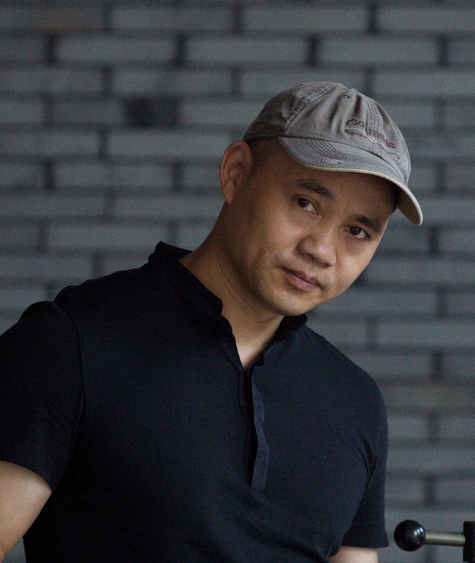
— Ying Jinfei(Director of Zhejiang Art Museum、 Vice Chairman of Zhejiang Artists Association)
Appreciating Lai Zhigang’s works as a whole, I feel that they contain the aspects of Taoist aesthetics that we understand. A very typical feature is the use of realistic techniques to describe the void. In literati paintings, landscapes are often left blank or added with clouds and mists, as a method of not painting or empty. But Lai turn them into a volume, which is a subversion of the concept of our traditional landscape painting. Taoists say that "the highest kindness is like water", "water has no normal state" and "water is close to Tao". We can feel these cultures about water through his works. Water becomes water vapor when heated, becomes ice when cooled, and changes its shape with the container. Lai is actually describing water from a dynamic point of view, solidifying it into an entity, which is a kind of conceptual reverse thinking in philosophy. These points made a deep impression on me. The biggest difference between his landscape paintings and traditional literati paintings is that he added elements such as space, layers, thickness and volume. These huge paintings are actually deduced from Taoism, but they are endowed with a heavy feeling by "accumulated-ink".He dared to break through traditional painting and traditional landscape, which I think is very important.
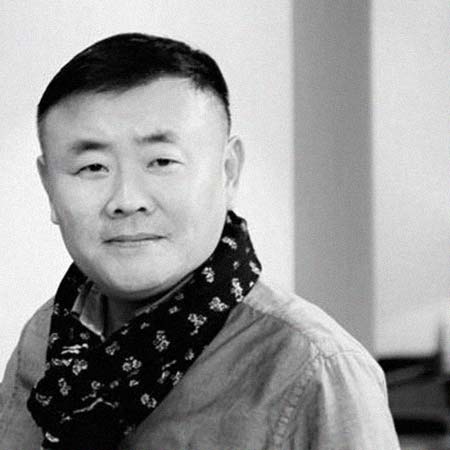
— Yang Dawei(Professor of School of Design and Art,、Zhejiang Institute of Communication Curator)
In Lai Zhigang’s picture, I saw an inner connection, that is, he is very serious, very particular, and quite simple. In fact, Lai used the way a contemporary person sees the world, rather than the way the ancients viewed landscapes. I think this is commendable. In his entire art, the two most frequently used words are majestic. For example, the painting Spring Tide really brought me a big surprise, because it has a strong sense of majesty. Obviously, for this form and momentum, he has gone through many times of scrutiny and research, and it is by no means accomplished overnight. Painting cannot deceive people, so without a sincere attitude and a particularly strong willpower, such a masterpiece cannot be completed. The creation method and attitude of this masterpiece have already infected me, and I am very pleased. Not only because of their large scale, but also because of his handling and understanding of the big, and his attitude as an artist who has accumulated from the small to the big.
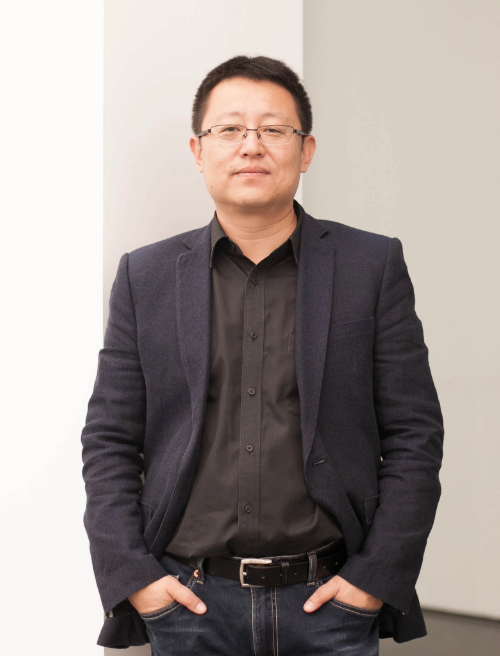
— Zhang Gan(Professor and Doctoral Supervisor of Tsinghua University Academy of Fine Arts)
Lai Zhigang’s large-scale works reflect a very majestic momentum, and it can be seen that he has a relatively open mind. When painting clouds, he is like what Dong Qichang said in his essays: "The essence of painting lies in the changes of mist and clouds. When painting landscapes, you must pay attention to the mist and clouds. You should not deliberately render them, but let the ink flow naturally. The state is blurred, creating a dynamic of transpiration, which is vivid." This is precisely what Lai emphasized that it is not necessary to draw lines, but to accumulate layers of ink. He did not completely break away from objective objects, but kept in touch with nature. But his paintings are not an objective portrayal of nature, but a very subjective expression that embodies the emotions of many artists. So I think when he was creating, he had an understanding of the essence of Chinese landscape painting.
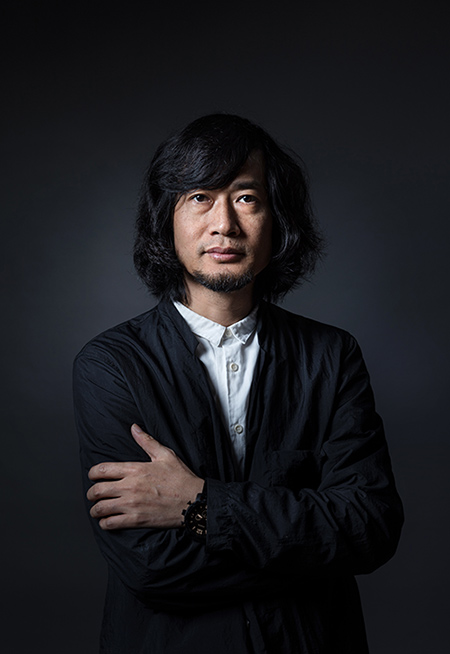
— Wang Shaoqiang(President of Guangdong Art Museum Association、 Vice Chairman of Guangdong Artists
Lai Zhigang is a creative and recognizable artist. His brush stroke and ink, including the realm of thought, and his ability to control mountains and rivers are very characteristic at the moment. I think he uses subtraction to create, for example, he uses ink, brush, and paper, and uses the simplest materials in Chinese painting to create a very rich picture with mountains and rivers. Among the current Chinese painters, he is very capable of controlling the integrity and momentum of large paintings.

— Li Honglin(Director of Theory Research Institute of China National Academy of Painting)
Lai Zhigang’s paintings are consistent with the characteristic of Chinese art and culture, but his form and artistic conception have surpassed traditional landscape paintings, with a fresh sense of the times. In some ways, his paintings are even as impactful and expressive as Western paintings. His "accumulated-ink" refers not only to the accumulation of ink, but also to the accumulation of diligence, hard work, learning, thinking and emotion. Therefore, his works not only present a majestic appearance, a precipitous momentum, and a magnificent and heroic aesthetic feeling, but also contain a resolute and strong character and a profound and dignified connotation. This kind of work is very difficult, in stark contrast to those paintings that are lazy, frivolous, impetuous, and unwilling to work hard. Lai’s mellow, dignified, plump, and moist brushstrokes create a 3D, sculptural white cloud with power, which is as thick and sublime as a monument, and brings a kind of real and illusory attraction to the viewers. power and unlimited imagination. With the paintbrush in his hand, he showed the great rivers and mountains and the upright atmosphere of China; it embodies the spirit of self-confidence and self-improvement of the Chinese nation, and is also in tune with the era of great rejuvenation. His artistic exploration and pursuit have endowed the traditional brush and ink language with new qualities and connotations, fully demonstrating the vitality of traditional Chinese art, as well as its value and significance in contemporary society. His works will surely become the classics of the 21st century.
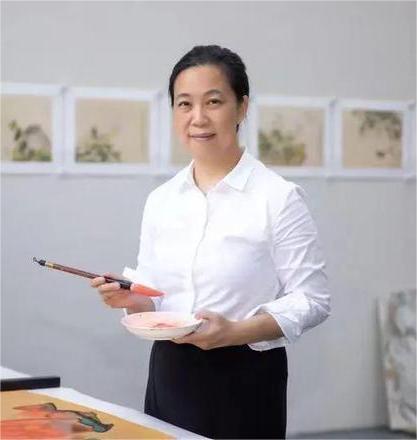
— Lin Lan(Chairman of Guangdong Artists Association、 President of Guangdong Academy of Painting)
Lai Zhigang’s art is broad and vigorous, very shocking. He has an innate artistic talent, as well as a personal creative passion for brush and ink. He not only shows his sophisticated skills in brush and ink in the mountains and rivers, but also has a delicate and unique painter’s artistic conception. He depicts the majestic mountains with powerful brushstrokes, and expresses water and clouds with alternate virtual and real techniques... The scenery he depicts not only emphasizes the majestic and open mountains and rivers, but also is the externalization of the mountains and mountains in his mind. His brush and ink are particularly flexible. Ink marks of different shades of touch, jagged and interlaced, and properly gathered and scattered brush lines effectively control the texture and rhythm of the entire painting. His depictions of clouds and water are particularly in line with his strong personal style. Standing in front of the huge works, I can see his adherence to the traditional brush and ink, and I can feel the spirit of the times of sticking to the right way and actively innovating reflected in the works.
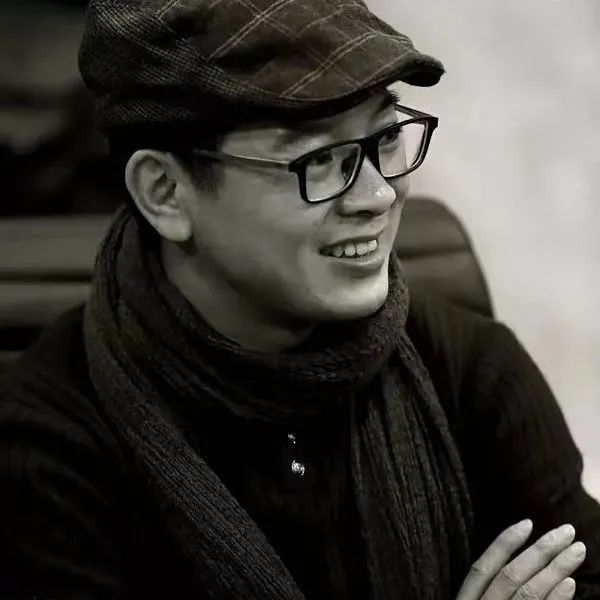
— Wang Ping(Deputy Secretary General of China Artists Association、 President and Editor-In-Chief of
Lai Zhigang uses bone to support the painting, and ink to create rhythm. He sticks to the essence and noumenal language of brush and ink, but he has a pioneering and breakthrough spirit of seeking change in terms of painting subject matter and language innovation. For example, he has some new explorations of mist, clouds, water, and the combination of ink-accumulation and themes of the times. His previous landscape paintings focused on artistic conception, but now they are more about the transition to momentum, which is due to his deep understanding and in-depth understanding of the connotation of traditional Chinese landscapes. So now his works reflect the development of an abstract art based on imagery landscapes. His majestic and sublime beauty is also related to some realistic art issues in the development of our era. It also has an internal echo with the spirit of the times that our nation strives for strength, forming a personal breakthrough of Li-style landscape.
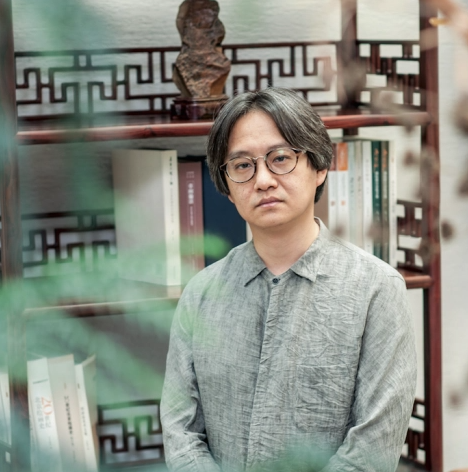
— Wu Hongliang(President of Beijing Academy of Fine Arts)
In Lai Zhigang’s paintings, we can clearly feel the full nourishment he got from Li’s landscape. More importantly, he also hopes to find his own different artistic language in it. Judging from the concept of "fullness", Li-style landscapes also have "fullness", but Mr. Lai Zhigang’s "fullness" not only embodies the modern sense of composition, but also has a sense of emptiness. Through his water and clouds, we can all feel his individual language, which is still developing day by day following the overall logic of inheritance.
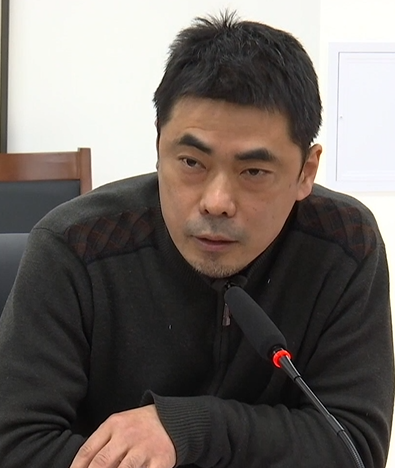
— Chen Ming(Deputy Director of Theory Research Institute of China National Academy of Painting)
Lai Zhigang is constantly exploring more possibilities of ink based on the context of the development of Song and Yuan landscapes and even modern landscapes. He keeps adding subjective imagery and consciousness, and finally forms an appearance that is now unforgettable and shocking. He is good at using the changing characteristics of water, so there are often very magical and amazing effects in his works. On the whole, his works have a sense of surreal space inside, creating a fantasy realm. In particular, his large-scale works are full of ambiguity, imposing momentum and great attraction. Up close, they resemble modern abstract paintings. He cleverly uses the way of squeezing or leaving blank space to open up the context of the picture, which I think is too critical. In this way, an unstoppable life and a majestic and solid sense of dynamism are highlighted in his paintings, which cannot be achieved in many landscape paintings. In terms of ink accumulation, he has reached a very high level.

— Yu Yang(Professor of the Central Academy of Fine Arts 、Deputy Director of the National Thematic A
Lai Zhigang not only comes from tradition, but also stands at the forefront of the times. He has created his own unique landscape style no matter from the pattern of ink wash or the pattern of brush and ink. The variation of gray tones presented by his ink and wash has the richness of brush and ink tones or color scales. In the personalized expression of the brush structure, the superimposition of fine outline, dense texture and ink rhyme produces a new style of subtlety and solidification. In the painting method where the brush quality and ink marks are integrated, he has also constructed his own individual style, which cannot be classified by region, nationality, or era, just like Bada Shanren said that Shi Tao’s paintings are free and unrestrained that do not belong to any school. The landscapes and waves in his paintings have image quality, which is also a contemporary character and looks very imposing in the exhibition hall. This is also the discovery of the great visual tension of contemporary landscape painting, which presents Lai’s unique and charming artistic characteristics.

— Wei Xiangqi(Research Librarian of National Art Museum of China、Curator)
There are three main connection points in the construction of Lai Zhigang art. The first is the development of landscape painting since the founding of New China, especially the source of landscape painting from life. The second is that since the reform and opening up, the new concept of modern ink painting to experimental ink painting has brought about new manifestations in his creation. The third is his new understanding of brush and ink, a new understanding of Chinese tradition. The combination of these three forms his own artistic language and form, which is his new achievement in this exploration. He has walked all the way from the mountains to today, and it is very difficult for him to attract so much attention. We can see many new things from his creation. He is good at capturing intangible things such as water, air, and mist, and transforming them into three-dimensional and reasonable objects through sketching, forming an immersive viewing experience or creative experience. That’s why we feel like we can walk into his paintings when we look at them. The whole procedural, experiential, and physical things are actually something we value very much in contemporary ink painting theory, not just the expression of modern ink painting on fairy mountains, fairyland and similar things.
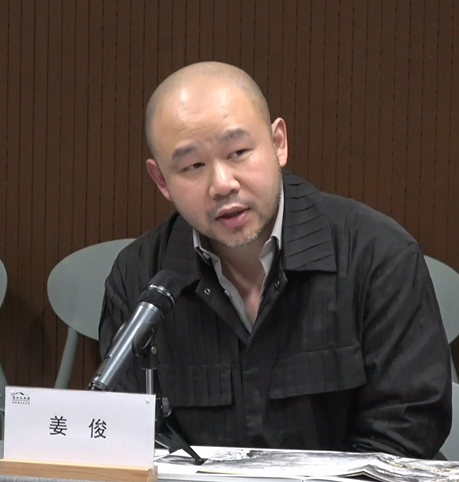
— Jiang Jun (Curator、Art Critic)
Lai Zhigang’s works are large in size and displayed in a mega-structure, which can be traced back to the five-meter huge painting frame of Abstract Expressionism, and also can be traced back to the huge historical theme frame of France in the 19th century. The earlier source of these huge picture frames is the altarpiece of the church, with the function of presenting the prayer of man to God, and the relationship between man and God. In this process, strong movement also exists in romantic landscape painting, leading to the abstraction of art in the next stage. Looking at Mr. Li’s works from the perspective of contemporary art, I think the painting Spring Tide expresses this kind of abstraction and sublime very well, and has a strong sense of movement. Of course, it is huge, like a magnificent altarpiece. As for what is sacrificed, we may regard it as some kind of landscape concept or some abstract concept and so on.